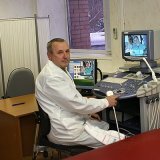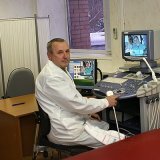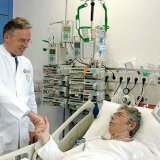Types of extracorporeal methods of treatment
 Extracorporeal methods of treatment, or so-called treatment outside the body, are familiar to everyone. This is, first of all, therapeutic massage, as well as various physiotherapy procedures, methods of in vitro fertilization popular in recent years, and others. That is, this effect on the human body without instrumental or medicinal penetration into the body. One of the most important areas of its application is the treatment of extremely dangerous as well as often fatal diseases by means of extracorporeal purification of human blood, its components from various harmful, dangerous substances. This area is not young, and used to purify blood, do bloodletting, in 1944, the first artificial kidney in the world was activated, hemodialysis, immunosorption, hemofiltration, plasmapheresis, hemosorption, and the like later appeared.
Extracorporeal methods of treatment, or so-called treatment outside the body, are familiar to everyone. This is, first of all, therapeutic massage, as well as various physiotherapy procedures, methods of in vitro fertilization popular in recent years, and others. That is, this effect on the human body without instrumental or medicinal penetration into the body. One of the most important areas of its application is the treatment of extremely dangerous as well as often fatal diseases by means of extracorporeal purification of human blood, its components from various harmful, dangerous substances. This area is not young, and used to purify blood, do bloodletting, in 1944, the first artificial kidney in the world was activated, hemodialysis, immunosorption, hemofiltration, plasmapheresis, hemosorption, and the like later appeared.
The situation in our country.
In Russia, most people die of atherosclerosis and all that is associated with it( ischemic heart disease, stroke, myocardial infarction, etc.).According to the well-known research center of preventive medicine, more than half of the adult population of our country have an increased concentration of cholesterol in the blood, and 20% of it leads to a high risk of developing cardiovascular diseases. The main enemy is "harmful" cholesterol, which accumulates in the blood vessels in the form of plaques. Especially dangerous are these plaques in the cardiac vessels and vessels of the brain, as often cause heart attacks and strokes. If the case is severe, resort to surgery. Cardiac surgery, such as coronary artery bypass grafting, which creates a new way to bypass the cholesterol-enriched pathway for blood, stenting, which dilates blood vessels, helps but does not help. Unfortunately, the disease can not be cured, plaques may continue to arise and grow. There is no absolute certainty that an "enemy" does not interfere with other vessels and does not kill stents or shunts that are installed.
Atherosclerotic lesion of vascular walls with signs of hyperviscosity of blood, slowing of blood flow inevitably leads to the development of thrombogenesis. Thrombogenic risk factors include impaired fibrinolysis, platelet activation, clotting factors, increased fibrinogen levels, increased blood cholesterol levels, and low-density lipoproteins.
Preventive measures.
The concentration of lipoproteins in a person's blood directly depends on the severity of atherosclerosis in the arteries. It is considered as an independent marker, with the help of which it is possible to detect the development of atherosclerosis.
Therefore, it is necessary to pay great attention to the introduction of preventive measures and the creation of specialized programs that are aimed at optimizing medical care. These programs consist of identifying individuals with different stages of atherosclerosis, further directing a person to a survey within the framework of this program.
In the event that it is not possible to achieve the required values with statins and normalize the state with nicotinic acid, extracorporeal treatment in the form of LDL or LP-feresis is necessary. Even one such procedure can reduce the level of LP by 88 percent. This method of treatment can be considered unique, since it allows you to remove various harmful fractions from the blood plasma, while maintaining in the plasma components that are important for the body: hormones, proteins, vitamins. The size of the particles that are removed is 15 nanometers, so this method can be an example of modern nanotechnology. Purification of blood from harmful compounds leads to the fact that later cholesterol plaques gradually resolve and stabilize. There comes a remission. Most often this is the only way to help the patient.
Therefore, if you have unstable blood pressure, fast fatigue, severe and frequent headaches, as well as dizziness, you should urgently consult a specialist to perform a vascular examination and measure the level of cholesterol. These precautions will protect you from the development of such extremely dangerous diseases as stroke and heart attack.
Why use extracorporeal methods of treatment?
Various types of extracorporeal methods of treatment are used to remove from the body accumulated harmful metabolites, dangerous toxic substances, and in addition, to optimize the water-electrolyte balance. The use of certain types of extracorporeal methods of treatment is determined by these tasks: for the purpose of removing electrolytes and nitrogenous slags, hemodialysis and peritoneal dialysis is necessary; ultrafiltration is indicated to remove excess water; hemosorption and hemofiltration are necessary to reduce the content of toxins and "medium molecules";Removal of high-molecular compounds make plasmapheresis. These extracorporeal methods of treatment, as a rule, are used for the treatment of acute renal failure and chronic renal failure. In addition, in patients with chronic renal failure who are in a sufficiently long-term treatment with various extracorporeal methods of treatment, complications caused by prolonged persistence of such suburhemic condition, as well as repeated delays in water and electrolytes, are possible. These methods do not treat endocrine and metabolic disorders, as well as complicated renal anemia, possible hemostasis defects, severe immunodeficiency.
Also in patients with chronic renal failure who have been on hemodialysis for a long time, encephalopathy and polyneuropathy often develop. They are characterized by depressive and psychotic reactions, various bacterial, fungal and acute viral infections. Accordingly, the management of patients with uremia, in the treatment of which for a long time used different types of extracorporeal methods of treatment, has its own distinctive features. A diet for patients on dialysis is needed, which is close in caloric content and protein content to the diet of healthy people, should contain foods consisting of a large number of vitamins of group B, C, as well as folic acid.
Restrict the use of liquid, fat, carbohydrates, sodium, phosphorus, potassium. In addition, they regularly monitor their serum concentrations, prescribe calcium carbonate and antacids that bind phosphates( diamond), if necessary, metabolites of vitamin D are added to them. Insufficient control of the level of phosphorus-calcium metabolism leads to severe consequences - myopathy, Osteodystrophy, calcification, and also to necrosis of soft tissues.



